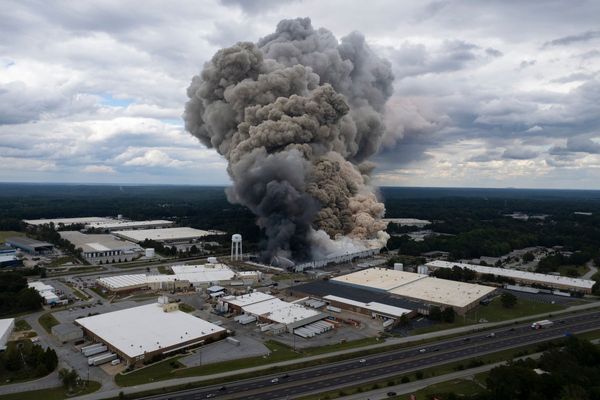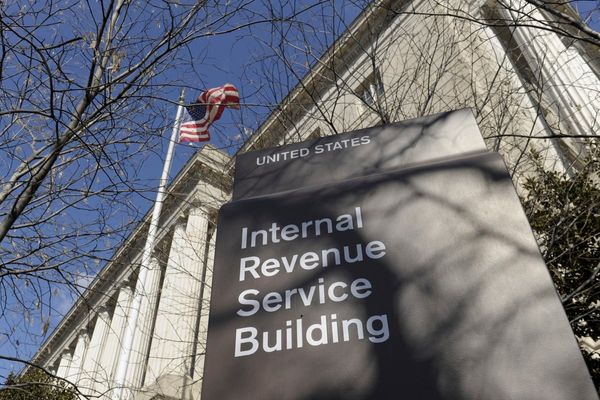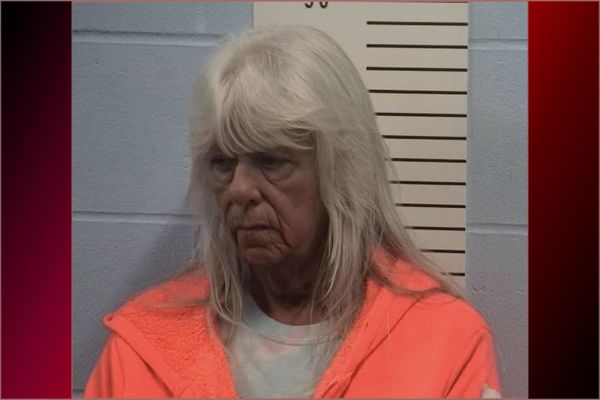
Tied to a branch, the mannequin dressed in a Russian uniform had been propped up to appear like a soldier crouching menacingly behind an anti-tank missile, covering a key approach road for Ukrainian forces. By Thursday, it had toppled into the dirt, and the effect was no longer frightening. Instead it seemed ridiculous.
Across the narrow road heading south towards Nova Kakhovka in Kherson province another dummy was visible, placed this time as if peering over the top of a dugout.
The war that has swept down this road to push Russian forces back towards the Dnipro River in Ukraine’s far south did not pause long at this crude deception, used to cover the Russian retreat.
Instead, Ukraine’s armour and infantry sped by, forcing the Russians out of the ruined towns and villages that they once held.
Unlike the wooded hills of the Donbas, the land here is flat, broad fields sectored by tree lines of acacia and oak, poplars and eucalyptus. They provided meagre cover for the Russian armoured vehicles that can be seen burned out in the distance, sometimes several together.
Razor-sharp shrapnel fragments litter the road’s surface. Lines of Russian anti-tank mines, strung together to close access to the road, have been defused and pulled to one side of the carriageway. Everywhere the skeletal remnants of missiles that once carried cluster bombs stand like tree-stumps in the fields.

One meadow is cratered every 20 metres by the dozen or so munitions that flew into it. Beyond that, the road is heavily damaged.
Two destroyed cars are half buried in a blast hole close to where three Ukrainian soldiers are resting on their tank, next to a line of civilian cars waiting for the road ahead to be de-mined. Four days after Ukraine’s president, Volodymyr Zelenskiy, announced the liberation of the villages along this route, one of the lines of the Ukrainian advance, they have come to check on their houses in the town ahead.
For some it is the second day waiting to pass, listening to the sound of Ukrainian artillery working regularly in the distance next to a field of unharvested rape seed rotting in the ground.
Father Piotr, an Orthodox priest with the Moscow patriarchate, is among those waiting to continue. He is not wearing his vestments but shows a card identifying himself as a cleric.
“I’ve been in [the nearby city of] Kryvyi Rih since I left in July. All of us are waiting to get back. They’ve told us we can’t go in until the police and engineers have de-mined it. I couldn’t stay. The shelling was too heavy and people were getting shot. Some people stayed.”
“If I can get to the town,” he adds, “I want to stay there.”
Diana Zadouska and Petro Ilchuk left earlier, fleeing in April. Their motivation is a little different to the priest’s. “We just want to go and see if the house is still standing.
“We couldn’t stay after the Russians came in March because of the cruel treatment. Then we saw Zelenskiy’s speech on 2 October saying our town had been liberated. We thought we’d wait a bit before coming. So we’ll take a look and then go back to Kryvyi Rih.”
Natalia Sirash, 30, who once worked in a plant in her home town that produces lime for cement, nods towards the sound of shelling. “I mean, it can’t be safe! The war is still going on. We want to go back to our house but not until the war is really over.”
Suddenly the sound of an altercation breaks out. A man is shouting at Father Piotr, whose church is seen as being pro-Russian. “We should demolish your church,” the man is shouting angrily. The priest is accused of blessing Russian troops in his home town at Orthodox Easter.
“Did you fight for Ukraine?” the priest angrily counters. His accuser is silent for a moment. “They wouldn’t take me,” he eventually replies.

It is a brief insight into the future of these towns and the accusations that will be inevitable: who collaborated, who went to war, and how finely those definitions might be delineated.
Most of the roads running south of Kryvyi Rih towards the embattled city of Kherson are a testament to the warfare still raging further to the south, after Ukrainian forces swept across a swathe of the northern part of the region.
On Wednesday night, the Ukrainian military and Zelenskiy said the Ukrainian flag had been raised above seven more villages in Kherson region previously under Russian occupation, with Davydiv Brid, the closest of the liberated villages to the city of Kherson, about 60 miles away.
Switching to Russian in his nightly address, Zelenskiy spoke directly to pro-Moscow forces, telling them they had already lost. “Ukrainians know what they are fighting for. And more and more citizens of Russia are realising that they must die simply because one person does not want to end the war.”
There is a stark symbolism to this advance. The region and city where Russia seemed most embedded in its nine-month-long war of aggression against Ukraine is visibly diminishing. Destroyed civilian carts painted with the Russian Z symbol litter the fields and roads, suggesting that some people most invested in the occupation have not survived their attempt to flee.
Where the war in the south goes from here, however, is a bigger question.
While the Ukrainian attack from the north and west towards Kherson has cut critical supply lines – including the heavily damaged Antonivsky Bridge outside the city leaving Russian forces vulnerable – the defences here are reported to be better, with hardened shelters and reinforcements transferred from the east.
Some Russian forces, facing the recent concerted Ukrainian effort, however, have been voting with their feet, surrendering to the attacking forces.
One extraordinary video released by the Ukrainian army in Kherson showed a Russian infantry fighting vehicle with a white piece of fabric wrapped around its gun barrel surrendering to Ukrainian troops and its three-man Russian crew falling to their knees as a group of Ukrainian soldiers covered them with their guns.
The deputy head of the Ukrainian regional government, Yuriy Sobolevskyi, said military hospitals were full of wounded Russian soldiers and that Russian military medics lacked supplies.
The speed of the Ukrainian advance in the south and east is prompting open criticism of Russia’s top military brass in a way that would have been regarded as unthinkable earlier in the conflict.
Among those speaking out on Thursday was Kirill Stremousov, the deputy head of the Russia’s illegally installed occupation administration in Ukraine’s Kherson region, who said in a video that Russia’s Sergei Shoigu, the defence minister and an ally of Putin, should shoot himself for his military failures.
“Indeed, many say: if they were a defence minister who had allowed such a state of affairs, they could, as officers, have shot themselves.
“But, you know, the word ‘officer’ is incomprehensible for many.”







